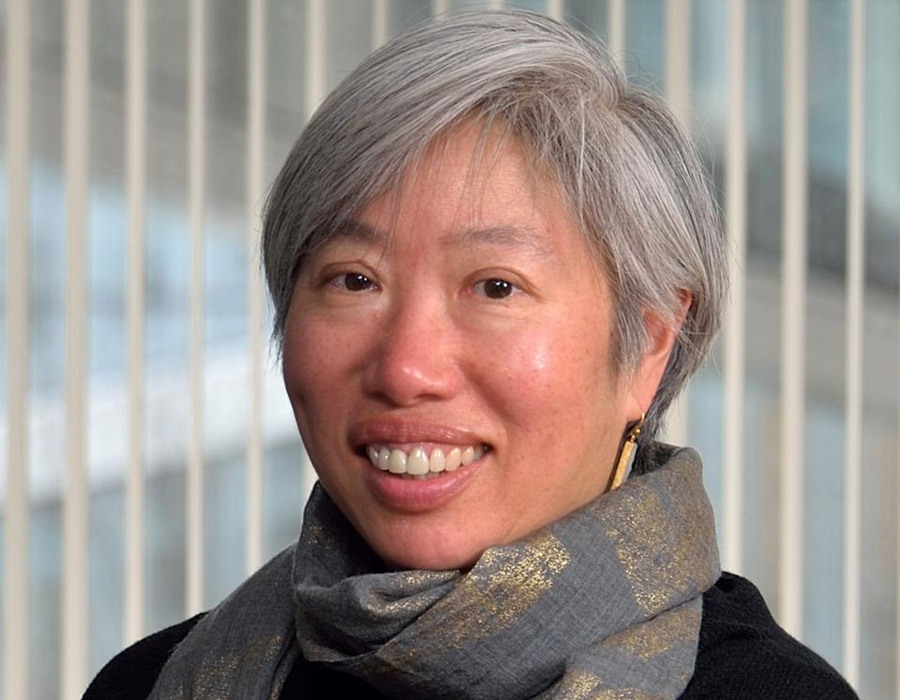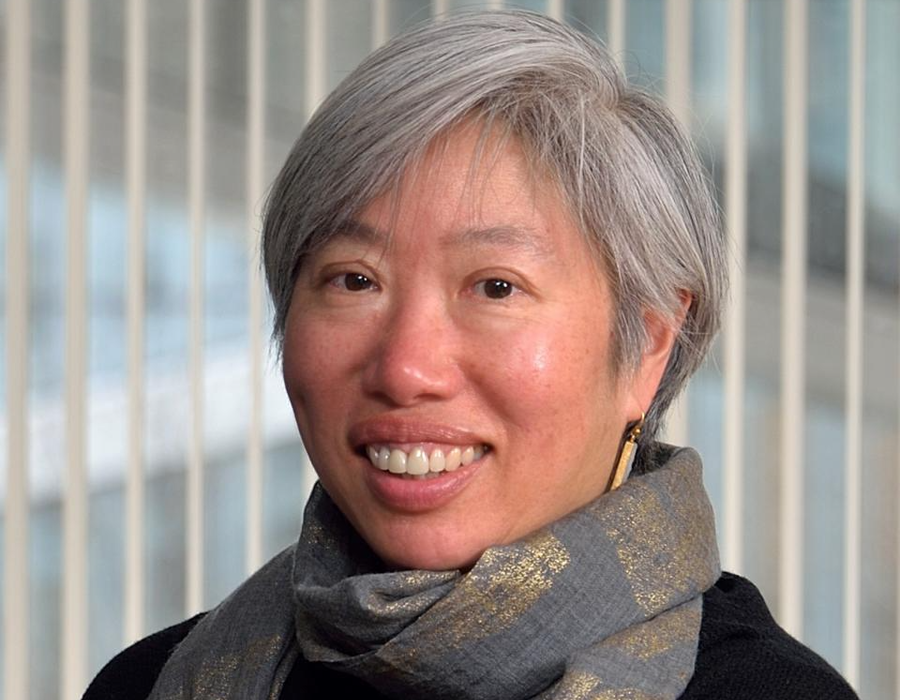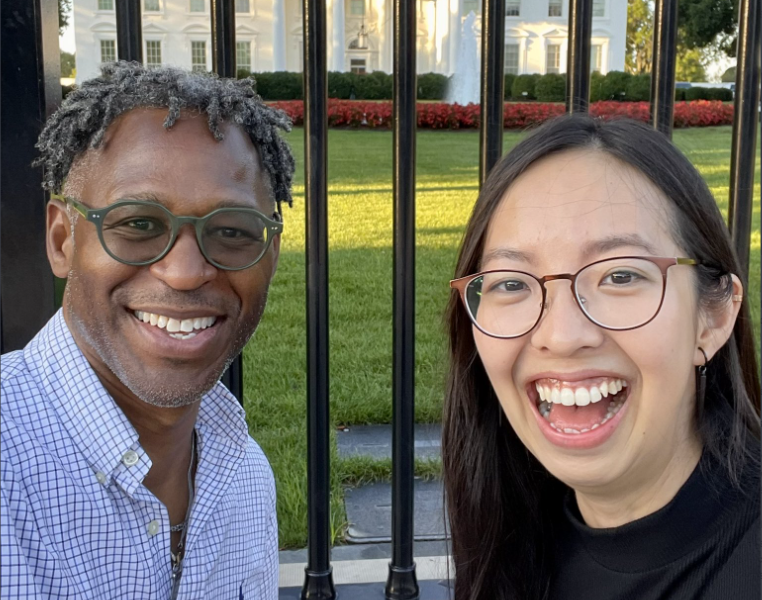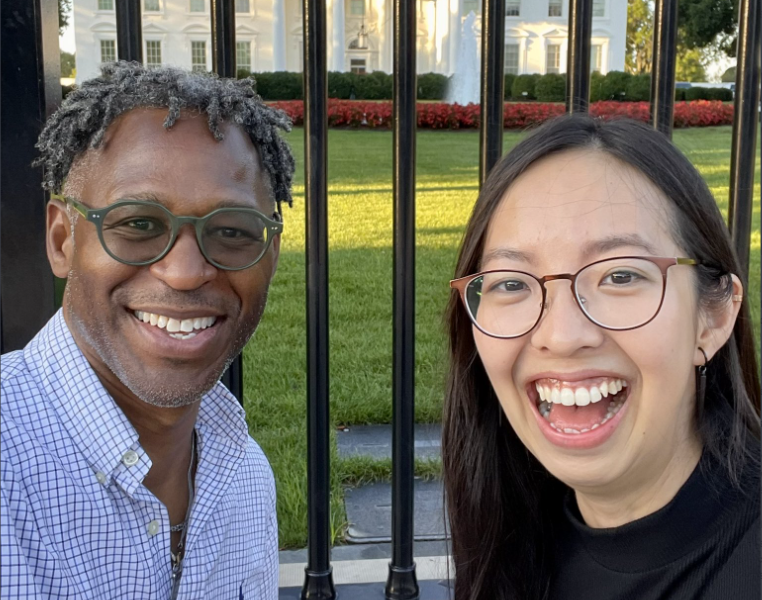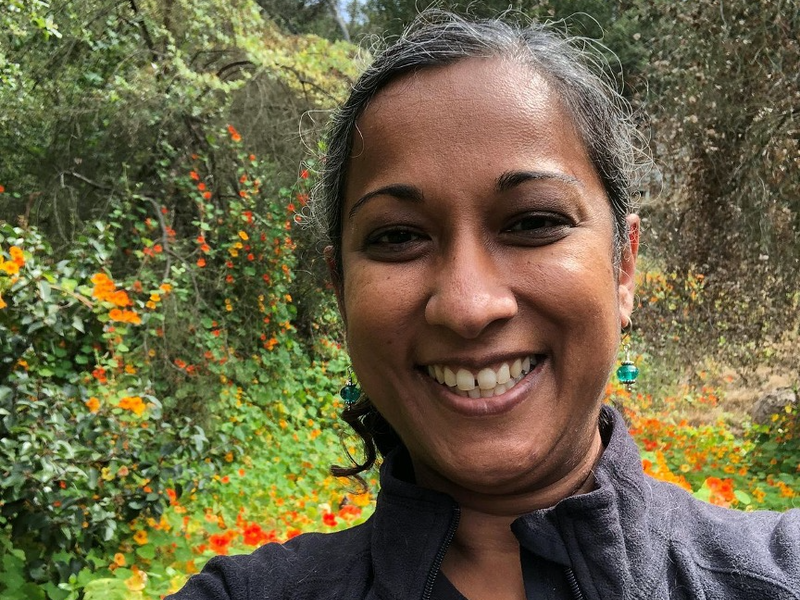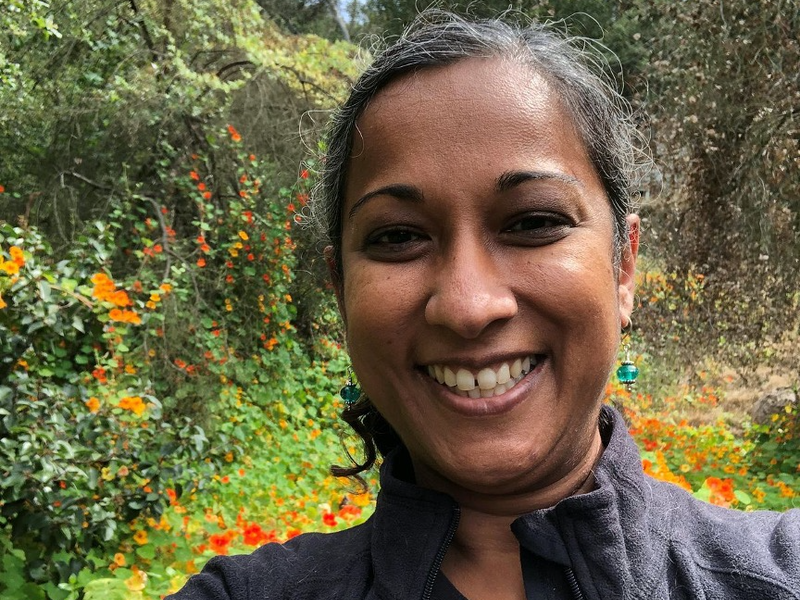Systemic Racism Reflected in Grant Allocations, Researchers Argue
Over the years, physicist Andrea Liu, a second-generation Asian American, has been subjected to a variety of disparaging remarks. One colleague, for example, told the University of Pennsylvania professor, “it’s obvious that English is not your native language, but I can understand you just fine,” a statement she describes as “clueless.” On another occasion, a reviewer on a National Science Foundation (NSF) grant proposal wrote, “Liu should collaborate with her former postdoc to make sure the work is feasible,” feedback that Liu calls “pretty condescending.”
Liu attributes some of these remarks to sexist ideology and outdated ideas of gender roles. But it is the systemic racial prejudice that she finds the hardest to shake. A soon-to-be-published analysis of grant money allocations suggests that Liu is likely not alone in that feeling [1]. The study—which has been accepted in the peer-reviewed journal eLife—finds pervasive disparities in the funding rates for scientists from different racial groups, with white scientists at the top and Asian scientists at the bottom. The team behind the study says that the way funding has been allocated reflects systemic racism and calls on the NSF, a US federal agency, to eliminate the disparities. The conclusions echo outcomes of a 2011 study that looked at the allocations of funds by the National Institutes of Health (NIH), another federal agency, and of a 2022 report from Wellcome, a charitable foundation in the UK that funds research.
Many scientists have come forth to applaud the study, and some have related their own experiences of bias within the NSF. They note, however, that this study is not the final word on disparities in NSF funding, as the publicly available data do not include important administrative information about the applications as well as the racial makeup of reviewers and other persons involved in grant reviews. Everyone agrees that scientists need full access to all these details to uncover the true extent—and the causes—of any biases.
The Asian Hurdle
The new study—which took two years to complete—was led by Christine Yifeng Chen, a postdoctoral researcher at Lawrence Livermore National Laboratory in California. Chen, who identifies as Asian, says she was spurred into action after a Zoom call in which a senior colleague, who also identifies as Asian, commented that it is “an ‘open secret’ that Asian scientists have a harder time getting funding from the NSF” than other racial groups. Shocked at the comment, Chen wanted to learn more, as did others on the call, including Chen’s friend Sara Kahanamoku, a graduate student in historical marine ecology at the University of California, Berkeley, who identifies as Native Hawaiian and uses the pronoun they.
The duo delved into the publicly available NSF data on the race and ethnicity of the principal investigator (PI) on each grant application. They found lower-than-average funding rates for applications from Asian scientists as well as from other minority racial groups. Chen and Kahanamoku then contacted researchers from across the sciences to help them carry out a full analysis of the data. They wanted the team to include social science and policy experts and to reflect the full diversity of racial groups funded by the NSF. They also wanted the help of more senior researchers, as they worried that otherwise “nobody would listen to us,” Chen says.
The study lays out some stark findings. For over two decades, white scientists have consistently surpassed their peers in gaining NSF grants. In 1999 their funding success rate was 2.8% above the overall average. By 2019 that rate had increased to 14.3% above the average. In contrast, the success rate for Asian scientists has been persistently low, regularly dropping under 20% of the average. The rates for Black and Latino scientists hovered somewhere in between those for whites and Asians. The team found the same trend across science disciplines. “We were shocked by the consistency of the disparities that have held for over two decades,” Kahanamoku says.
The team infers that white scientists have received a “surplus” of 12,820 awards over the past 20 years. Meanwhile, Asian scientists have a “deficit” of 9701 awards. For Black and Hispanic scientists, the deficits are 417 and 175 awards, respectively. (Pacific Islanders and Native Hawaiians also have a deficit, and American Indians and Alaskan Natives a surplus, but the grant submission numbers from those groups are too low to make the award numbers statistically meaningful.)
Each award in the deficit column represents a person whose project went unfunded and whose career could thus have stalled, Kahanamoku says. Collectively, these experiences could lead to a significant accumulation of disadvantage for a given racial group. “That really struck me,” they say.
The results confront a common misperception that NSF funding favors historically excluded racial groups, says mathematician Marissa Loving of the University of Wisconsin-Madison, who identifies as Hawaiian and Black. “I know this [narrative] to be false, both from my own experience and from those of my peers and mentees. But it is really gratifying to have it so clearly illustrated in NSF’s own data.”
The Panel Problem
Delving deeper into the awards process, the team analyzed the so-called panel scores for the different racial groups. All grants are analyzed in detail by reviewers who separately score the application on a scale from 1 (poor) to 5 (excellent) against a set of criteria. Based on this score, a decision is made for or against funding the project. Chen and her colleagues found that proposals for Black and Asian scientists were systematically rated lower than those of white scientists.
“That result really resonated with me,” says Cesunica Ivey, a Black assistant professor of environmental engineering at UC Berkeley, who was not involved in the study. She says that the dearth of Black tenured scientists means that young Black scientists can lack close relationships with mentors who might help them write research grant proposals. Starting in high school, white and Black students can have “diametrically opposed learning experiences,” she says. “That may be showing up in the panel scores.”
Ivey also notes another problem: she has been a member of multiple grant panels and recalls cases where the discussion chair—typically a grant program manager—has flipped the consensus of the room from funding a particular grant to rejecting it. Claudia Rankins, a former NSF program officer who worked primarily with researchers from Historically Black Colleges and Universities (HBCUs), had similar experiences. “What was revealed in the [new study] has been known to people at the NSF for years,” she says.
Another former NSF employee, Roger Wakimoto, who was the assistant director of the NSF’s geoscience directorate, says he was “dismayed” when he first learned of the study’s results. “NSF holds the community to a very high standard when it comes to diversity,” he says. “Especially for the big awards, if you don’t have a very profound section about how you are addressing diversity, equity, and inclusion, you aren’t going to get funded.” Wakimoto applauds the NSF for this effort but goes on to say that even while working at the NSF he questioned whether the foundation was holding itself to those same standards. “I never came away with the feeling that the answer was yes.”
Rankins now works on the other side of the grant application process, helping researchers at HBCUs write and submit NSF funding applications. She says that she rarely sees comments on a failed application indicating problems with the idea or with the methodology. Rather, the panel’s comments usually imply that the researcher’s institution “doesn’t have the capacity” to support the work or that the researcher was “too ambitious” in their plan. “As a Black researcher, when you get feedback that says you were too ambitious, you know exactly why they’re not funding you,” Rankins says.
Community Response
On social media and in email discussion groups, scientists have largely voiced positive reactions to the airing of these concerns. “You have brought daylight to a place where there absolutely needs to be more,” Alejandro Flores (@HydroLejo), a hydrologist at Boise State University, Idaho, wrote on Twitter after reading a preprint version of the study. Experts in social inequities in the sciences have also weighed in on the study’s results. “The Asian investigator gap is very concerning,” says Donna Ginther, a white economist at the University of Kansas and the lead author on the 2011 NIH study and a 2019 follow-up. She applauds Chen and her colleagues for addressing this issue.
There have been two public voices that question the conclusions of Chen and her colleagues: the husband-and-wife physicists Charles and Cynthia Reichhardt who work at Los Alamos National Laboratory, New Mexico, on problems in condensed matter. Cynthia identifies as white and Charles as Hispanic. Six weeks after the preprint version of Chen et al.’s study appeared online, the Reichhardts submitted a comment on the same preprint server [2].
The comment does not dispute the funding disparities found by Chen and her colleagues but claims that they could be explained by other factors: the increase in Asian faculty over the past 20 years and the different funding statistics for each of the NSF directorates—topical areas within the agency. Separately, Charles published a blog post on a site that hosts voices critical of diversity initiatives. The post lays out similar arguments as the comment but also includes remarks that question the professionalism of Chen and her colleagues.
Chen and her colleagues declined to speak about the Reichhardts’ analysis and remarks until the comment has completed peer review. However, they noted in conversations before the Reichhardts’ analysis came out, that they had considered both factors the Reichhardts’ raise. They also requested from the NSF access to additional administrative data on all the applications as well as the evaluations of those applications. That request went unheeded. “I find it strange that as a government agency they can withhold that information,” Wakimoto says.
Chen and her colleagues along with Ginther and others I spoke to all said that this additional information on applicants—as well as information on the racial identification of the reviewers, program officers, and other relevant NSF staff—is needed to tease out the causes of the disparities. “Once [researchers] have cracked open that data, we will be able to see clearly what’s driving the differences in funding success,” Ginther says. “It behooves the NSF to do the heavy lifting of a high-quality study with all the data.”
Toward Complete Racial Equality
The issue of diversity in scientific fields recently rose to the forefront with the August 9th signing of the CHIPS and Science Act, a $280 billion package that invests in research and development—primarily targeting the semiconductor industry. The legislation contains several provisions aimed at diversifying the STEM workforce, including the creation of a Chief Diversity Officer position at the NSF. Within this emerging environment, many have called for the NSF to start implementing measures to reduce the impacts of any racial biases in the grant process. These measures include double-blind review of grants—where all identifiers of the submitting scientists are removed—and bias training for all reviewers.
But Liu and Ivey are skeptical that these measures would have any real impact. “The race and core values of a person are inextricably linked…and no amount of bias training is going to change someone’s core values,” Ivey says. Liu notes that truly double-blind review is impossible to achieve. Even if the name is blanked out, “it’s really easy to figure out who the researcher is” from the application’s summary and reference list, she says. Chen and Kahanamoku point out that the NIH tried both bias training and blind-review procedures after the 2011 study that highlighted similar racial trends at the agency. However, analysis of 2019 NIH data shows that the same disparities still exist and, for some groups, have worsened. “The NSF should consider the past 10 years at the NIH as a cautionary tale of well-intentioned solutions failing to create meaningful progress,” Chen says.
So what could change the status quo? Ivey would like to see the makeup of all review panels represent the diversity of the community whose grants they are judging: “It’s not about quotas but about representation of views and values.” Kahanamoku agrees. Measures such as diversity training miss the root causes of the disparities, they say. “What a person considers as a scientific question worth investigating changes a lot based on their personal background and the values they hold.” Currently, the funding structures don’t account for those differences.
To illustrate the idea, Kahanamoku turns to their own research on the impact of climate change on small Hawaiian communities. The questions they explore are very specific to these communities, such as the effect of climate change on the fish production from a specific lake. Another scientist—one without a Hawaiian background, for example—might instead ask: what are the water quality indicators for this region and how does that change over time? Although both sets of questions address climate change, studies have shown that different research frameworks have different likelihoods of receiving funding. At the NIH, for example, investigators found that proposals considered to be of fundamental or general interest were more likely to be funded than those considered to be of relevance to just one community. The former rarely had Black PIs, while the latter often had Black PIs.
Whatever the outcome of the peer review of the two funding-equity studies, Chen and her team hope to see reform in grant-awarding systems. They know that it will be challenging and will take time, but they say that the appetite for change is palpable. Early-career scientists—and particularly those from underrepresented groups—are “desperate for a giant overhaul of the scientific enterprise,” Kahanamoku says. Chen agrees. “I wish I never had to do this work,” she says. “It has taken both a physical and mental toll on me.” But, she says, no one else had stepped up to the plate. “These data were out there for years, in plain sight.”
Asked for their response to the findings of Chen et al.’s paper, an NSF media representative offered a prepared statement from the agency. This statement said that the NSF’s director, Sethuraman Panchanathan, has made addressing racial funding disparities “one of the top priorities for agency progress, and [he] continues to take this [matter] seriously.” As part of this priority, the NSF has launched a new initiative for 2023—entitled GRANTED (Growing Research Access for Nationally Transformative Equity and Diversity)—that aims to reduce the various barriers that minority researchers can face when applying for funding. The statement ended by noting that the NSF acknowledges “there is still much [work] to do."
Correction (8 November 2022): A previous version incorrectly stated that the PI discussed by Ivey was a person of color. They were white.
–Katherine Wright
Katherine Wright is the Deputy Editor of Physics Magazine.
References
- C. Y. Chen et al., “Decades of systemic racial disparities in funding rates at the National Science Foundation,” OSF Preprints (2022); eLife (to be published).
- C. Reichhardt and C. J. O. Reichhardt, “Comment on preprint “Decades of systemic racial disparities in funding rates at the National Science Foundation”,” OSF Preprints (2022).






